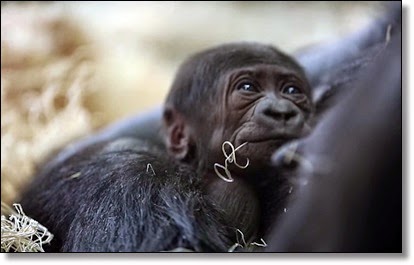Apes, too, experience a kind of midlife crisis, found a new study. The surprising result suggests that the middle-aged blues may be a result of biology, not culture, and its evolutionary roots run deep.
"It was an astounding thing for us to find this pattern, to be honest," said Andrew Oswald, an economist and behavioral scientist at the University of Warwick in the United Kingdom. "It may be that the midlife crisis is driven by primate biology in a way we don 't understand, and if that 's the case, we all have to learn how to deal with it."
"I think it 's helpful for people to understand this dip," he added. "With luck, this could people them see that this is completely normal and that could help them get through it."
Studies in more than 50 countries over the past 20 years have revealed a near-universal pattern. Over the course of life, happiness tends to follow a U-shaped curve, with people ranking their sense of well-being higher in the first and last decades of life than in the middle.
The low point generally strikes between age 45 and 50 for both men and women, and the pattern crosses economic and demographic lines.
For each animal, zookeepers, researchers or caretakers answered four questions about the well-being of their primate friends, including whether the apes seemed to be in good or bad moods. The humans also ranked how happy they thought they 'd be if they were to become the animal for a week. They had spent time with the animals for at least two years and knew them well.
Apes live to be about 50 or 55 years old and, just like in people, results showed a drop in happiness that reached its lowest point about halfway through the animals ' lives, the researchers report today in the journal Proceedings of the National Academy of Sciences.
The magnitude of the dip was on par with the dips in happiness that people experience in their middle age, Oswald said. He compared the difference between the apes ' highs and lows to the loss in well-being that people report with marital separation.
The new findings help rule out some theories for midlife slumps in humans, said Arthur Stone, a psychologist in the psychiatry department at Stony Brook University in New York. For example, a whole generation of people can end up feeling less happy at a certain time in their lives simply because of some external historical situation. But that is unlikely to happen in societies of apes.
Instead, it might be chemical or physical changes in our bodies that influence how our feelings morph throughout our lifetimes.
"What this really starts to point to is that maybe there are biological things that we just don 't know about," Stone said. "Maybe there are changes in the brain, changes in how neurotransmitters work or changes in how hormones work that relate to how people view their lives and how animals feel. People will be looking at this more seriously, I think."
Apes Giggle Like Humans






